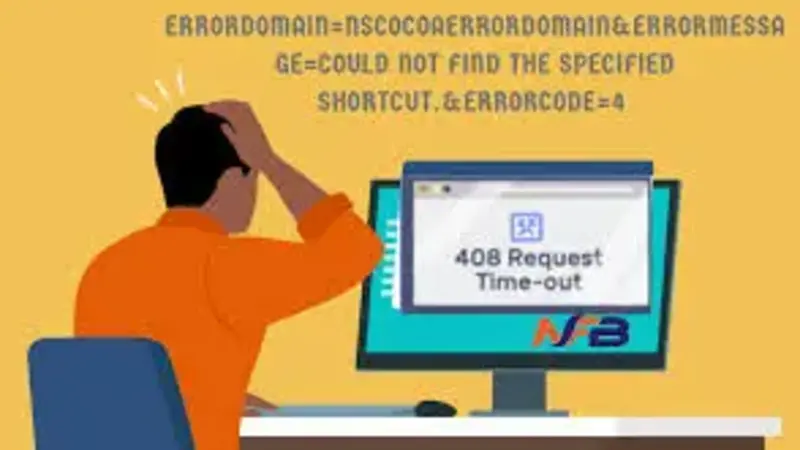When working with macOS, developers and users may occasionally encounter error messages that can be cryptic and challenging to resolve. One such error is associated with the NSCocoaErrorDomain and typically presents itself as:
Error Domain=NSCocoaErrorDomain Code=4 “Could not find the specified shortcut.”
This article provides an in-depth look at what this error means, why it occurs, and how to troubleshoot it effectively.
What is NSCocoaErrorDomain?
NSCocoaErrorDomain is a fundamental error domain used by the Cocoa frameworks (which include Foundation, AppKit, and others) on macOS and iOS platforms. Error domains are used to group related error codes, and NSCocoaErrorDomain specifically handles errors thrown by various common operations within these frameworks, such as file system interactions, data handling, etc.
Understanding Error Code 4
The Code=4 associated with NSCocoaErrorDomain generally indicates an issue related to “file not found” or similar file system errors. When the error message specifically mentions that it “could not find the specified shortcut,” it is typically related to macOS failing to locate a file or directory that was expected to exist at a specified path but doesn’t.
Possible Causes:
- Invalid Path or Filename:
- The path provided to access the shortcut is incorrect. This could be due to a typographical error, a change in the file system, or the file being moved without updating the respective path.
- Permissions Issues:
- The application trying to access the shortcut might not have the necessary permissions. This could prevent it from seeing or accessing the file, even if it exists.
- Corrupted Files or Shortcuts:
- The shortcut itself might be corrupted or improperly configured, which leads to errors when the system or an application tries to access it.
- External Drives or Networked Locations:
- If the shortcut points to a location on an external drive or a networked location that is not available (disconnected or turned off), the file cannot be found.
How to Troubleshoot:
To effectively resolve this error, follow these steps:
Step 1: Verify the File Path
- Check the path specified for the shortcut. Ensure that it is correct and that the file or folder it points to exists where the path says it should.
- Use Finder to navigate to the supposed location and confirm the presence of the target file or folder.
Step 2: Check Permissions
- Inspect permissions of the file/folder. Right-click the file or folder in Finder, select ‘Get Info’, and look under ‘Sharing & Permissions’. Make sure the user account has the necessary rights to access the file.
- If permissions are incorrect, they can be modified here, though administrative rights may be required.
Step 3: Validate the Shortcut
- If dealing with a symbolic link or an alias, verify that the link is not broken. This can be done by checking the link information in the Terminal or by re-creating the shortcut.
Step 4: Consider External and Networked Drives
- Ensure all drives are properly connected. If the shortcut points to an external or networked drive, make sure the drive is connected and turned on.
- If the network location is unavailable, ensure network access and permissions are correctly configured.
Step 5: Use System Tools
- Utilize Disk Utility to check for disk errors. This can help identify and resolve issues with the file system that might be causing the problem.
- Check system logs for any related errors that might provide more context on the issue, which can be accessed via the Console app in macOS.
Step 6: Update Software
- Ensure that all system software and applications are up-to-date. Sometimes, bugs related to file handling are resolved in software updates.
Conclusion
Encountering an NSCocoaErrorDomain Code=4 error can be frustrating, but by methodically checking the file path, permissions, and the integrity of shortcuts, one can usually resolve the issue. If the problem persists, considering external factors like hardware connections and software updates is also a crucial step. By following these guidelines, users and developers can ensure smooth access to necessary files and keep their operations running without disruption.
